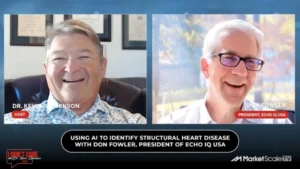Disaster Preparedness for Healthcare Facilities
When disaster strikes, healthcare facilities and their staff play an essential role in the response efforts. It is therefore vital to address emergency preparedness before help is needed. One only has to look at the ongoing crisis in Puerto Rico after Hurricane Maria to see the devastating result of not being prepared.1 Natural or human-made disasters, epidemics, terrorist attacks, and other public health emergencies all create a desperate surge in demand for healthcare. Let’s take a look at how your healthcare facility can better prepare for disasters.
Natural Disasters are on the Rise
If you feel like the weather is getting more destructive, it’s not just your imagination. Last year’s hurricane season was the costliest in U.S. history. Americans witnessed more than $200 billion worth of damage from the start of June until the end of November.2 Add in wildfires in the west, torrential rainfall in the east, and record-breaking temperatures across the country, and it’s easy to see why disaster preparedness is not just a good idea, it’s an absolute necessity.
If You Fail to Plan, You’re Planning to Fail
Hospitals typically have general emergency management plans in place but may not have a program that specifically prepares staff for a large-scale incident or a smaller hazardous materials situation, such as an industrial accident. To adequately provide care and ensure patient and staff safety during a public health emergency or natural disaster, the planning process should address all phases3 of a crisis:
- Facility Risk Assessment – This multidisciplinary process should include representatives from all services involved in an emergency situation including infection control, infectious disease, and safety staff.
- Hazard Vulnerability Analysis – The Joint Commission on Accreditation of Healthcare Organizations4 requires member hospitals to complete an annual Hazard Vulnerability Analysis (HVA) to provide a foundation for emergency planning efforts.
- Training – Everyone working at a healthcare facility needs to be adequately trained to react to disaster situations. Luckily, U.S. government agencies like the CDC, FDA, and FEMA, offer valuable resources for emergency management preparedness and response, including the Preparedness and Emergency Response Learning Center (PERLC).5
- Command and Coordination – Emergency situations are typically chaotic and confusing, but that doesn’t mean the response should match. Individual roles and responsibilities during the disaster should be clearly defined. The Hospital Incident Command System (HICS) is a respected emergency management system that helps healthcare facilities devise management structure, clear reporting channels, and other key parts of an effective emergency plan.6
- Evacuation – When conditions are severe, and force evacuation of the facility’s patients and staff, the safety of patients and the possibility of continuing their care rely entirely on a facility’s preparedness. Security and communication are vital in a successful evacuation. Moving a high quantity of people out of a facility can cause panic, so keeping patients and staff safe is difficult but necessary. Facilities can subdue widespread fear in the outside world with effective communication to media outlets.7
Healthcare Facilities Cannot Respond Effectively Without the Right Supplies on Hand
A comprehensive line of emergency equipment and supplies is essential for disaster preparedness. Products to consider include:
- 50-Person Trauma First Aid Kit – A compact and portable first-aid kit that is fully-stocked to meet the emergency medical needs of up to 50 people.
- Personal Emergency Response Kits – Provide support for one person in an outdoor survival situation for up to 24 hours.
- Emergency Cots – Quickly supply extra bedding capacity to address a sudden surge in patients.
- Emergency Thermal Blankets – Waterproof and windproof material protects from the elements and helps keep patients warm, dry, and clean.
- All-Season Shelter Emergency Pack – A tent, heavy-duty vinyl ponchos, and six-in-one survival tool helps meet the basic emergency shelter needs of two people.
Learn more at https://www.alimed.com/emergency-preparedness/.
References
- https://www.fiercehealthcare.com/healthcare/puerto-rico-s-hospitals-continue-to-struggle-without-power-and-fuel-thousands-dialysis
- https://news.nationalgeographic.com/2017/11/2017-hurricane-season-most-expensive-us-history-spd/
- http://www.premiersafetyinstitute.org/safety-topics-az/emergency-preparedness/emergency-preparedness/
- https://www.jointcommission.org
- https://www.cdc.gov/phpr/perlc.htm
- http://hicscenter.org/SitePages/HomeNew.aspx
- http://www.premiersafetyinstitute.org/safety-topics-az/emergency-preparedness/emergency-preparedness/









